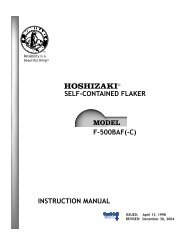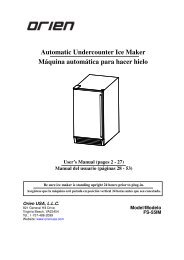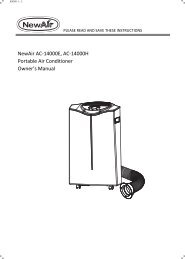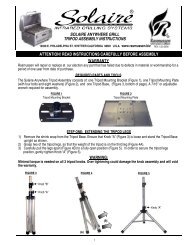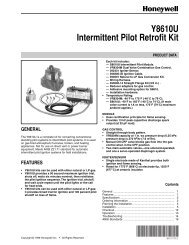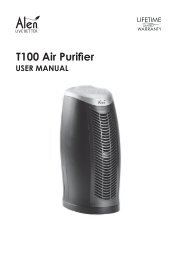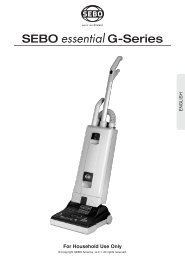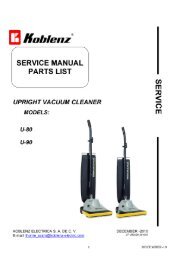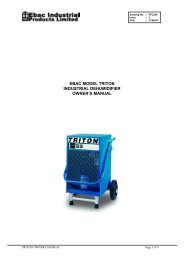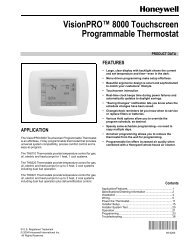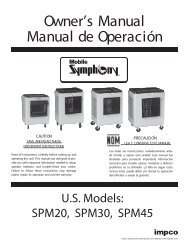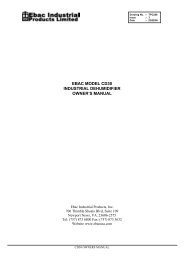™ Care & Use of Your New Grill - Rasmussen
™ Care & Use of Your New Grill - Rasmussen
™ Care & Use of Your New Grill - Rasmussen
Create successful ePaper yourself
Turn your PDF publications into a flip-book with our unique Google optimized e-Paper software.
RUST mARKS<br />
When this type <strong>of</strong> staining occurs it is<br />
unlikely that rusting <strong>of</strong> the stainless steel<br />
itself causes the marks. Similar marks<br />
can be found with both porcelain and<br />
plastic sinks. The rust marks are more<br />
likely to be the result <strong>of</strong> small particles<br />
<strong>of</strong> “ordinary”steel which have become<br />
attached to the surface; these have subsequently<br />
rusted in the damp environment.<br />
The most common source <strong>of</strong> such particles<br />
is from "wire-wool" scouring pads,<br />
but contamination may also occur from<br />
carbon steel utensils and cast iron water<br />
supply pipes.<br />
These brown marks are only superficial<br />
stains, which will not harm the <strong>Grill</strong>; they<br />
should be removable using a s<strong>of</strong>t damp<br />
cloth and a multi-purpose cream cleanser.<br />
Occasionally, it may be necessary to<br />
resort to a proprietary stainless steel<br />
cleanser, to return the surface <strong>of</strong> the <strong>Grill</strong><br />
to its original condition. To avoid reoccurrence<br />
<strong>of</strong> any "rust-staining" it is<br />
essential that the source <strong>of</strong> the contamination<br />
be eliminated.<br />
PITTING<br />
Another form <strong>of</strong> corrosion, which occasionally<br />
occurs in stainless steel, is pitting<br />
<strong>of</strong> the surface. The reason for this corrosive<br />
attack can usually be attributed to<br />
certain household products, for example:<br />
Bleaches<br />
Most common domestic bleaches & sterilizing<br />
solutions contain chlorine in the<br />
form <strong>of</strong> sodium hypochlorite. If used in<br />
concentrated form, bleaches can attack<br />
the stainless steel, causing pitting <strong>of</strong> the<br />
surface. They should always be used to<br />
the strengths prescribed by the manufacturer<br />
and should be thoroughly rinsed <strong>of</strong>f<br />
with clean water immediately after use. All<br />
<strong>Care</strong> <strong>of</strong> Stainless Steel (cont’d)<br />
cleaning agents containing hypochlorites<br />
are unsuitable for long term contact with<br />
stainless steel and, even when used in the<br />
highly diluted form, they can give pitting<br />
under certain conditions.<br />
Foodstuffs<br />
In general stainless steel is fully resistant<br />
to all foodstuffs in common use. Only in<br />
isolated cases, such as when concentrated<br />
salt and vinegar mixtures are allowed to<br />
remain in contact with the steel for a long<br />
period, can any surface marking result.<br />
GRIllING GRIDS<br />
Routine cleaning <strong>of</strong> the grill grids is best<br />
accomplished by scrubbing the grids with<br />
a brass or stainless steel brush immediately<br />
before and after cooking, while the grill<br />
is hot. Wear a barbeque mitt to protect<br />
your hand from the heat while cleaning.<br />
When needed, remove the grids from<br />
the grill and scrub with a soap solution<br />
or oven cleaner. Rinse thoroughly, and<br />
allow the grids to dry completely before<br />
reinstalling onto grill.<br />
Page 11



